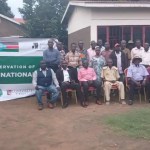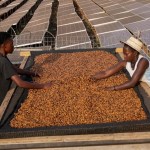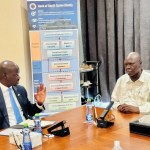(JUBA) – East Africa’s ambition for economic integration continues to be tested. The East African Community (EAC) comprising seven member states from the shores of the Indian Ocean to the shores of the Atlantic Ocean, including South Sudan has made major legal strides toward building a united regional economy.
The Customs Union has been in place since 2005, followed by the Common Market in 2010. A Monetary Union is planned for 2031. But while the legal frameworks exist, the practical reality on the ground remains far more complicated.
Experts agree that economic transformation in the region depends on five critical pillars namely investment, productivity, innovation, trade and strong institutions.
To support this vision, the EAC has taken several steps including the revision of its external tariff to protect local industries, implementation of a Single Customs Territory for faster goods clearance and construction of One Stop Border Posts to reduce delays at border crossings.
Additionally, the introduction of digital platforms like the Authorised Economic Operator (AEO) programme and a regional Customs Bond system aim to speed up trade processes for compliant businesses.
Despite these measures, Non-Tariff Barriers (NTBs) continue to hinder trade. These include unpredictable fees, additional paperwork, repeated inspections and inconsistent rules.
Kenya, for example, has regularly blocked products from neighbouring states such as milk, beef, sugar, poultry and maize citing regulatory or health concerns. In retaliation, Uganda has imposed excise duties on some Kenyan imports to limit their competitiveness at home.
A major source of friction is sugar. Uganda’s sugar producers, through their Trade Ministry, have petitioned the EAC Secretariat to stop Kenya from importing duty free sugar from outside the region. Although Kenya claims these imports are necessary to cover domestic shortfalls, Ugandan manufacturers argue that such imports distort the market.
Traders in Nairobi, they say, are re-exporting cheap sugar to regional markets, bypassing rules and undercutting local producers. Rwanda, Tanzania and Kenya currently enjoy EAC waivers that allow them to import sugar duty free from global suppliers like Brazil, increasing pressure on regional millers.
Under the terms of the Customs Union, goods produced within the EAC should move freely without internal tariffs. However, with cheaper sugar from outside the bloc flooding the market, local millers including those in Uganda are losing regional market share. Uganda’s Finance Ministry official, Moses Kaggwa, who has played a central role in negotiating regional agreements, concedes that NTBs continue to resurface, threatening the bloc’s long term goals.
The EAC’s combined GDP stands at roughly $240 billion, serving a population of around 300 million. In contrast, Norway, with just 5.5 million people, has a GDP of $501.7 billion. The comparison highlights the scale of lost potential in East Africa due to internal policy contradictions.
Uganda’s First Deputy Prime Minister and EAC Affairs Minister, Rebecca Kadaga, has voiced frustration about the slow progress. She criticised the disconnect between political agreements made at summits and the actions taken later by individual ministries. A recent example is Tanzania’s introduction of a 10% industry levy on plastic household items imported from EAC members. Tanzania says this move is in response to Kenya’s own discriminatory taxes. Such tit for tat measures only complicate regional integration further.
Unresolved frictions over Uganda’s milk exports to Kenya have also caused uncertainty, with restrictions changing without warning. Adding to the complexity is the fact that EAC members often sign international trade agreements independently.
Kenya’s deal making with external countries has raised concerns about whether the bloc still operates under a unified external tariff policy. However, with Kenya recently upgraded out of the Least Developed Country (LDC) classification, some argue it should no longer be bound by the same rules.
This shift has softened criticism, but the deeper issue remains. NTBs persist in different forms, undermining trust and slowing progress. Article 75 of the EAC Treaty clearly calls for the removal of such barriers, and the 2017 NTB Elimination Act reinforced this stance. Yet implementation remains weak.
The EAC Secretariat estimates that NTBs have cost the region up to $10.3 billion in lost trade, particularly in agriculture and manufacturing. These barriers include inconsistent sanitary rules, unclear origin regulations, road charges, duplicative inspections and administrative delays. Each adds time and cost to regional trade, discouraging investors and stalling growth.
To improve transparency and prepare for the Monetary Union, the EAC is developing a Common Public Data Management Framework. Though trade policy remains uneven, infrastructure development continues to offer hope. Stronger roads, energy links, and transport corridors are increasingly recognised as crucial to unlocking economic growth.
Kaggwa points to the regional standard gauge railway (SGR) project, which includes Kenya, Uganda and South Sudan, as an example of cooperative infrastructure that could ease cargo movement and reduce transport costs. He also mentions energy sharing agreements, with countries like Uganda looking to export electricity to those facing shortages.
Still, while 247 NTBs have been resolved through EAC’s monitoring system, many return due to poor enforcement. Annette Ssemuwemba Mutaawe, the EAC’s deputy secretary general for trade and customs, believes more action is needed on existing laws. Ratification of Article 24 on trade remedies, which would create a stronger dispute resolution mechanism, remains incomplete.
Without enforceable trade mechanisms, partner states can breach agreed protocols with few consequences. Different VAT and excise systems further complicate trade. Investors, Mutaawe notes, are put off by unclear regulations and discriminatory taxes.
“If there is no mutual trust, no law can work,” she said. “And without a predictable environment, both businesses and ordinary citizens will not benefit fully from integration.”
The EAC’s vision of a common economic space is still alive, but only if words on paper translate into consistent practice. For South Sudan, as one of the bloc’s newest members, these challenges are both lessons and opportunities.
Continued investment in infrastructure, regional coordination and policy enforcement will determine whether integration becomes reality or remains a distant promise.


















































